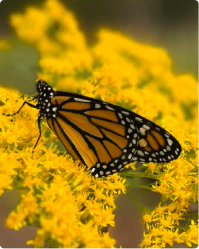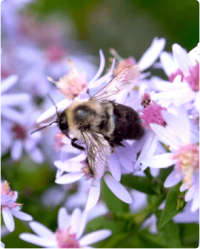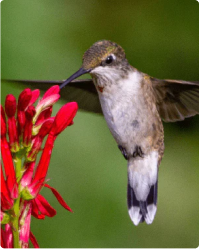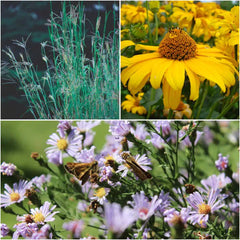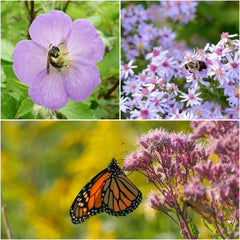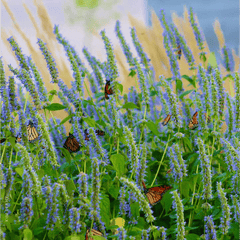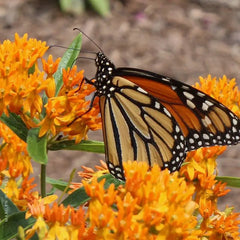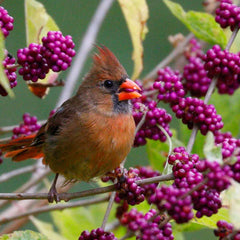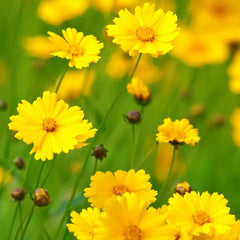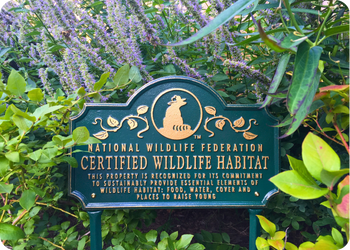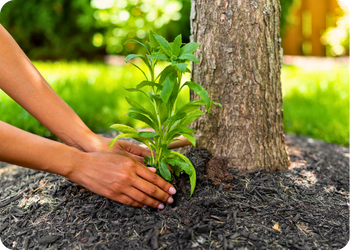Transforming School Campuses with Native Plants & Wildflowers

Transforming School Campuses with Native Plants and Wildflowers
Welcome to a world of colorful blooms, lush greenery, and buzzing bees - the world of campus landscaping! Today, we're diving deep into the incredible world of native plants and wildflowers. Not only do they add pops of natural beauty to sprawling campuses, but they provide an engaging educational opportunity for students to learn about local plant life.
Plus, these green heroes help reduce soil erosion, improve air quality, and conserve water. As experts in horticulture, we've seen firsthand the transformative power these plants can have on a campus environment.
From soothing the soul with their gentle fragrance to sparking curiosity in students' minds, the benefits of native plants and wildflowers are truly incredible.
So, let's take a walk on the wild side and explore this magical world of campus landscaping.
Related Reading: Native Plant Terms and What They Really Mean
The environmental benefits of native plants on school campuses
First things first, let's talk about the amazing environmental benefits of incorporating native plants into campus landscaping. These natural wonders are perfect for supporting local ecosystems and biodiversity.
By using plants adapted to your region, you're not only giving Mother Nature a helping hand but also reducing the use of water, fertilizers, and pesticides. Plus, native plant gardens create much-needed habitats for pollinators and wildlife, making your school campus an oasis for all things wild and wonderful.
Related Reading: The Rise of Millennial Gardening
The educational benefits
Campus plants offer more than just environmental appeal; they provide fantastic learning opportunities for students too! By teaching students about local flora and the importance of conservation, we're cultivating the next generation of environmental stewards.
Native plant and pollinator gardens can be integrated into various subjects, from science to art, and provide hands-on learning opportunities through habitat gardening and restoration projects. Talk about a win-win situation!
The aesthetic advantages
Let's not forget the visual appeal of native plant gardens. With their diverse colors, textures, and forms, they can easily enhance the beauty of any school campus. Plus, they offer seasonal interest and require less maintenance than traditional landscaping.
By incorporating state specific native plants into your campus landscaping, you're creating an inviting environment and promoting a sense of regional identity and pride among students and staff.
Supporting pollinators through native plant landscaping
As you may know, pollinators play a crucial role in our ecosystems. Unfortunately, these hardworking critters face some serious challenges, and their populations are declining. That's where native plant gardens come in!
By providing vital resources like nectar and pollen, we can help support and protect these essential creatures. Encouraging students to get involved in creating and maintaining pollinator-friendly landscapes can be both fun and educational.
Plus, integrating pollinator education into school programs and curricula can inspire a lifelong love of nature and environmental responsibility.

Selecting the right native plants for your school campus
To ensure your campus plants flourish, you'll need to consider local climate, soil, and sunlight conditions. But fear not; we've got you covered!
Our native plant finder can identify the most suitable native plants for your state or, even better, by your ZIP code. This invaluable tool will help you make informed decisions, ensuring your campus landscaping project is beautiful and sustainable. So, give it a try, and watch your native garden come to life!
Design considerations for native plant landscapes on school campuses
When designing your native plant garden, it's essential to balance aesthetics with functionality and safety. Think about incorporating native plants into existing landscapes or creating new gardens that encourage interaction with nature and foster environmental stewardship.
With some careful planning, your campus landscaping project can become a beautiful, educational, and eco-friendly space that everyone can enjoy.
Related Reading: Native Plants Are For The Birds
Maintenance and care for campus native plants
One of the best things about native plant gardens is their low-maintenance nature. However, that doesn't mean they're entirely hands-off. For successful establishment and ongoing care, be prepared for some seasonal gardening tasks some watering and pruning. It's also essential to address common challenges and misconceptions about native plants. With a little love and care, your campus plants will flourish and continue to provide benefits for years to come.
Success stories: examples of native plant landscaping on school campuses
Need some inspiration? Look no further! Across the US, numerous schools have successfully transformed their campuses with native plant gardens.
The University of Texas at Dallas (UT Dallas) is a shining example of how native plant landscaping can positively impact a school campus. Their project, which replaced a large parking lot with trees and greenery, significantly improved enrollment rates and changed the perception of the campus.

A survey of 334 campus users revealed that 87% of respondents had an improved perception of the campus, and 70% reported an enhanced quality of life, with reduced stress and more outdoor spaces to socialize. For 44% of students surveyed, the campus's appearance influenced their decision to apply or enroll at UT Dallas.
Sustainable features of the project include:
- A 1.1-mile main entry drive with 71,825 square feet of native woodland, housing over 5,000 trees, some of which were relocated from other campus areas.
- A 24,090 square foot central arbor constructed from Fiberglass reinforced polymer, an eco-friendly material with a low carbon footprint and long lifespan.
- Use of 97% native plants in landscaping, reducing water consumption and maintenance costs.
And it’s not just UT Dallas. Since going organic in 2008, Harvard College has led the way in campus transformations by ceasing the use of fertilizers and pesticides, saving 2 million gallons of water each year thanks to reduced irrigation. Additionally, the campus started composting yard waste, cutting their professional removal costs by $35,000 annually and further lowering expenses by about $10,000 due to foregone fertilizer purchases.
However, Harvard still has some progress to make in terms of incorporating native plants into their green spaces and reducing the number of pure grass fields. Cutting down on lawn size is more important than ever, or going even further and getting rid of the lawn entirely.

Numerous other universities have adopted organic lawn maintenance and gone the extra mile to incorporate environmentally-friendly elements into their campus landscapes. The University of Arizona in Tucson, for instance, has established native plantings that represent the five distinct biomes of the neighboring Sonoran Desert.
Related Reading: Why Garden for Wildlife Supports the Anti-Lawn Movement
Meanwhile, Allegheny College in Pennsylvania has grown multiple species of native wildflowers across one acre of land, forming an easy-to-maintain meadow. In Mississippi, Delta State University has enacted a policy that favors native plants in all upcoming landscaping initiatives.
Beyond native plant gardens, some schools have made significant strides in other sustainable directions. Boston University installed a student-managed rooftop garden atop a residence hall, and Yale University developed an innovative rainwater and phytoremediation system to reduce the campus's overuse of potable water.
These infrastructural changes, implemented by massive institutions, contribute to environmental conservation and showcase a top-down approach to promoting diverse green spaces. As more schools follow in their footsteps, we can expect to see even greater progress in sustainable campus landscaping practices across the nation.
Let’s get (re)wild!
Then there’s the Re:wild Your Campus movement. Re:wild Your Campus is an inspiring team dedicated to promoting and supporting the transformation of school campuses into thriving, eco-friendly spaces. By providing resources, educational materials, and guidance on native plant landscaping, this organization empowers students, faculty, and administrators to create greener and more sustainable campuses.
Re:wild Your Campus not only helps schools make positive environmental impacts but also fosters a sense of community and environmental stewardship among campus members. By collaborating with Re:wild Your Campus, educational institutions can work together to create a greener and more sustainable future for all.
These projects showcase the power of native plants in creating beautiful, sustainable, and educational spaces. By learning from their experiences, you can apply best practices to your own campus landscaping endeavors and make a real impact on your community, students, and the environment.
Cultivate campus biodiversity today!
As you can see, incorporating native plants and wildflowers into school campuses is a fantastic way to support pollinators, foster environmental stewardship, and create beautiful landscapes. So, whether you're a teacher, administrator, or student, we hope this guide has inspired you to champion the use of native plants in your school's campus landscaping.
Together, we can make a positive change in our communities and ecosystems, one native plant garden at a time. Happy planting!
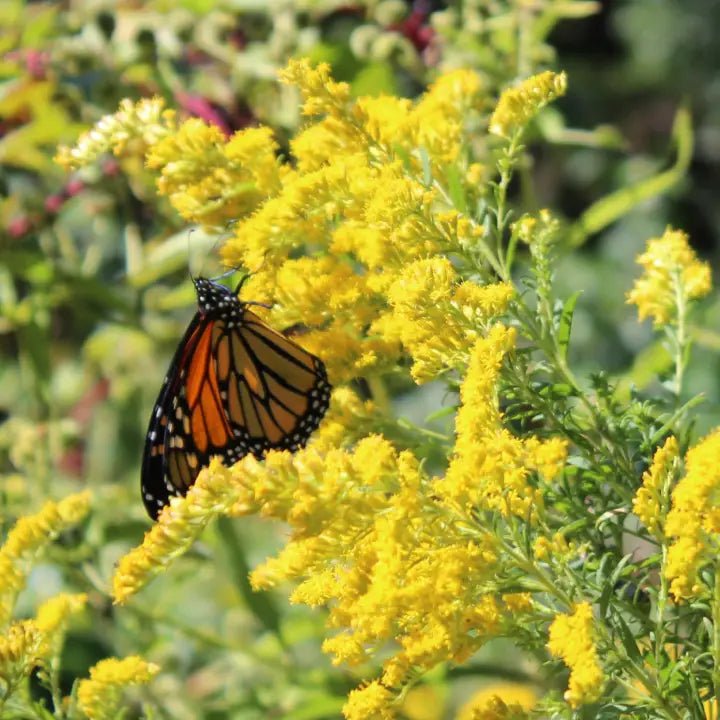
Find Native Plants by Zip Code
We took the guesswork out of planting native. Check your zip to see what ships!
